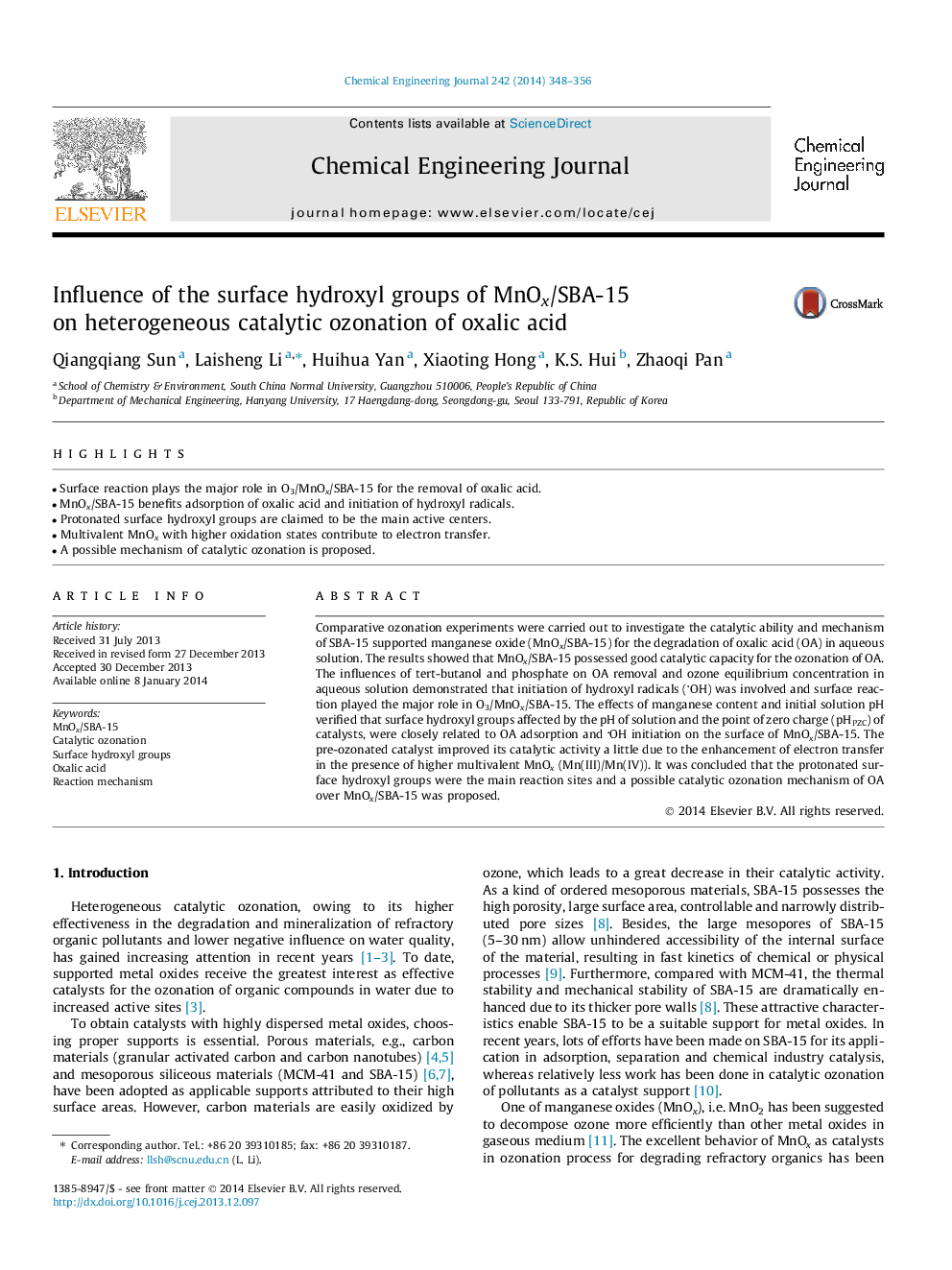| Article ID | Journal | Published Year | Pages | File Type |
|---|---|---|---|---|
| 147648 | Chemical Engineering Journal | 2014 | 9 Pages |
•Surface reaction plays the major role in O3/MnOx/SBA-15 for the removal of oxalic acid.•MnOx/SBA-15 benefits adsorption of oxalic acid and initiation of hydroxyl radicals.•Protonated surface hydroxyl groups are claimed to be the main active centers.•Multivalent MnOx with higher oxidation states contribute to electron transfer.•A possible mechanism of catalytic ozonation is proposed.
Comparative ozonation experiments were carried out to investigate the catalytic ability and mechanism of SBA-15 supported manganese oxide (MnOx/SBA-15) for the degradation of oxalic acid (OA) in aqueous solution. The results showed that MnOx/SBA-15 possessed good catalytic capacity for the ozonation of OA. The influences of tert-butanol and phosphate on OA removal and ozone equilibrium concentration in aqueous solution demonstrated that initiation of hydroxyl radicals (OH) was involved and surface reaction played the major role in O3/MnOx/SBA-15. The effects of manganese content and initial solution pH verified that surface hydroxyl groups affected by the pH of solution and the point of zero charge (pHPZC) of catalysts, were closely related to OA adsorption and OH initiation on the surface of MnOx/SBA-15. The pre-ozonated catalyst improved its catalytic activity a little due to the enhancement of electron transfer in the presence of higher multivalent MnOx (Mn(III)/Mn(IV)). It was concluded that the protonated surface hydroxyl groups were the main reaction sites and a possible catalytic ozonation mechanism of OA over MnOx/SBA-15 was proposed.
